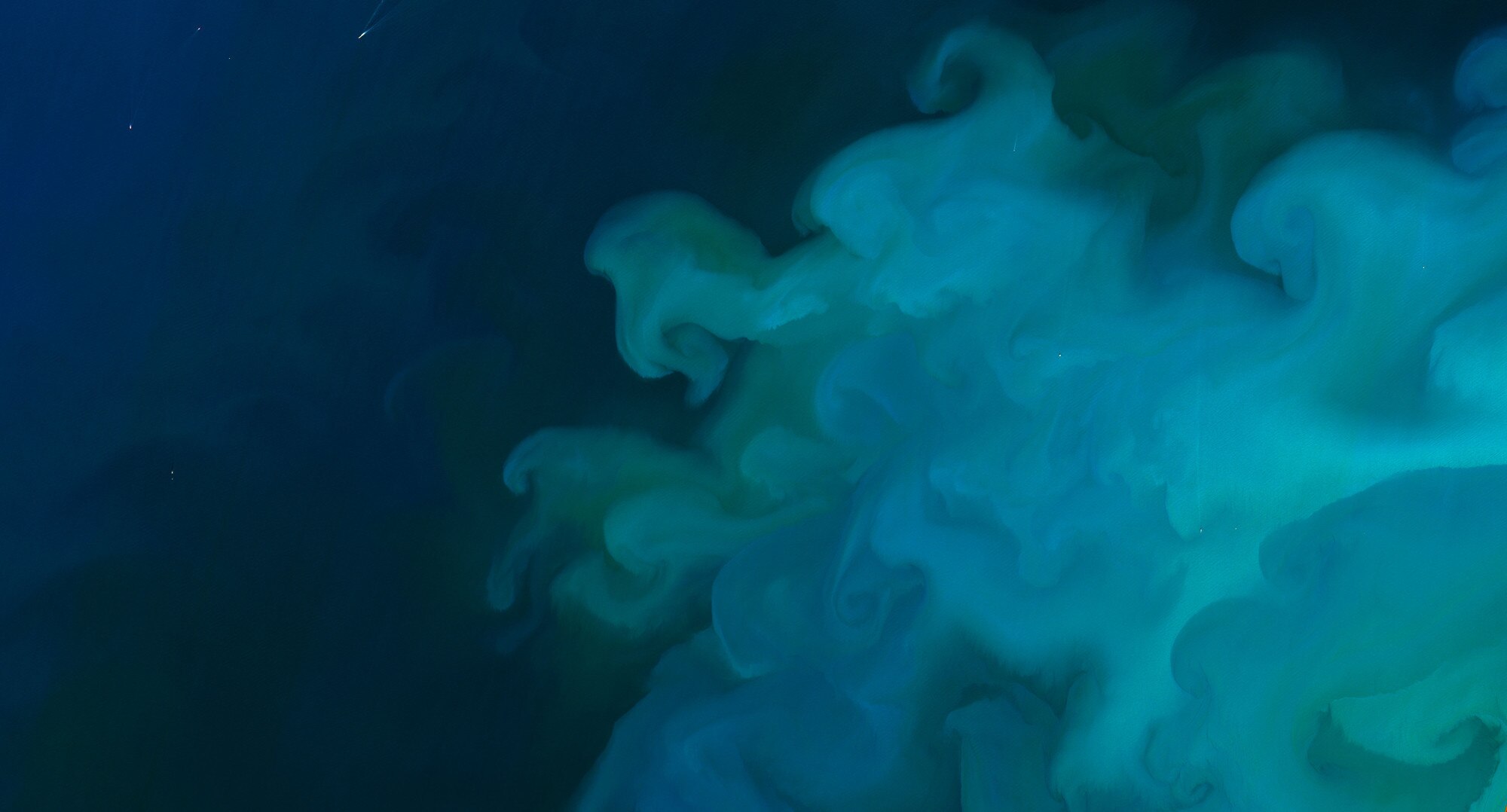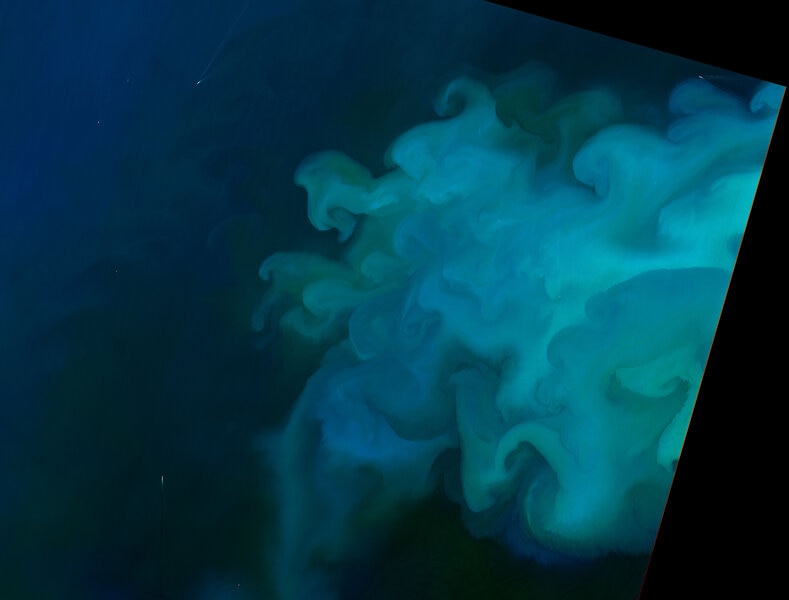Create a free profile to get unlimited access to exclusive videos, sweepstakes, and more!
A teal blob attacks the North Sea

I love images of Earth taken by satellites in space. The view from above is a change of perspective, not only giving us a different angle on our planet, but also showing us things on a scale that's hard to see otherwise.
Some Earth-observing satellites are tens of thousands of kilometers above our planet's surface, so they can provide "whole disk" views, nearly the entire hemisphere facing them at once. This is great for things like weather satellites, which need to get (literally) a big-picture view.
Others are in lower orbits. That's inconvenient in one way, because they don't see much of the planet at one time. However, what they do see they get fantastic resolution on; that is, lots of pixels across features so you can see details.
Landsat-8 is one of those birds. Its orbit is about 700 km up, and is nearly polar (traveling north/south instead of east/west), which puts it in a 16-day cadence with Earth's rotation; in other words, it images the entire planet every 16 days. And sometimes what it sees from that height is, well, pretty dang amazing.
Like this:
Whoa! Is that some sort of weird blob trying to eat our fair planet?
Actually, kinda. That's a phytoplankton bloom, a sudden explosive growth of algae. This one happens to be in the North Sea just north of the Netherlands. Phytoplankton use chlorophyll and sunlight to produce the sugars they need to live, and "exhale" oxygen as a byproduct. Nutrients they also need are generally supplied by runoff as ice melts, producing frantic growth: a bloom.
It's so pretty! The billowing you see is most likely due to currents in the water and wind blowing the surface.
But how big is it? The scale of it is hard to see in that image, but take a look at this one, where I've cropped a part of the full-res image:
See that little straight bright line? That's a ship. You can see the wake behind it. This image is something like 20 kilometers across!
So yeah, these blooms are big. And note that you see the bloom under the wake, because it's happening under the sea's surface. Cooool.
That shot was taken on May 5, 2018, a time of year when blooms are common in the North Sea as Arctic ice starts to melt. The entire bloom stretches for hundreds of kilometers.
Some types of phytoplankton can excrete toxins that can kill other life in the area, and sometimes bacteria come in, eat the phytoplankton, and can use up the oxygen produced. Either way, it's tough on other species who call that area home. Life can be pretty complicated, even when you're microscopic.
And humans, being macroscopic, can make it worse. Climate change affects all this as well. The oxygen produced by phytoplankton can get mixed into waters lower down, providing the life-giving gas to life down there. But as oceans warm that mixing decreases, and we get low-oxygen regions that can kill off life. That's not theoretical; that's already happening. Now.
As much as I love seeing our planet from space, I am always mindful that the land and seascape we see are being changed by us. The good news, such as it is, is that these views should and do remind us of that. We live on Earth, and Earth lives under us.
















